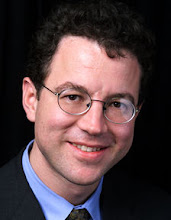The complex and varied nature of SAH involves a lot of decision making when there is less than definitive evidence. How do you write orders for fluids and pressors? What does it take to trigger hypertensive, hypervolemic therapy in your patients? When do you transfuse blood? Do you uniformly use statins or magnesium? How do you treat fevers, which occur in 70% of patients?
The list goes on and on. To address these many questions, which has lead to a tremendous amount of practice variation throughout the world, NCS sponsored the first International Consensus Conference on the Critical Care of SAH, held in paris in October of 2010. Chaired by former NCS President Michael N. Diringer of Washington University in St Louis, the conference was designed to complement existing guidelines from the American Heart Association, focusing on day-t0-day treatment and decision making in the critical care unit.
This activity was supported by a generous unrestricted educational grant from Actelion Pharaceuticals, sponsors of the Conscious trials of clazosentan, an endothelin-receptor antagonist vasodilator and putative treatment for vasospasm. The motivation of this company, with NCS as its willing partner, was to try to establish greater consistency and adherence to best medical practices for SAH in the ICU by creating an evidence-based document that identifies standards, guidelines, and options for the ICU management of patients with SAH. The company had absolutely no say in the design or content of the proceedings, or in its final product.
A multidisciplinary panel of 27 experts in SAH management, drawn from Europe and North America, representing neurosurgery, neurocritical care, interventional neuroradiology and neuroanesthesia participated. They used the GRADE system to evaluate the quality of the data, and made final recommendations that were classified as strong or weak cased on the quality of the evidence, taking into account (1) on the quality of the evidence, (2) the perceived risk versus benefit trade-offs of a given intervention, and (3) the feasibility of translating clinical trial and cohort studies into clinical practice.
Seventeen individual topics were reviewed. Here, to my mind, are some of the most interesting recommendations:
1. Consider an early, short course of antifibrinolytic therapy prior to early aneurysm repair (begun at diagnosis, for a maximum of 72 hours post onset. Although this is a weak recommendation, it is evidence based, and we have been doing this at Columbia for several years. It makes sense. I tell my fellows that when you get the call to transfer in an SAH patient, telling them to give a 4g load of Amicar is usually the only meaningful recommendation you are going to make.
2. Routine use of anticonvulsant prophylaxis with phenytoin is not recommended after SAH. This is a strong recommendation. It’s based on several studies linking phenytoin to poor functional and cognitive outcome after SAH. Could this statement is going to trigger a sea-change conversion to IV levetiracetam as the standard prophylactic NICU anticonvulsant?
3. Central venous lines should not be placed solely to obtain CVP values, and fluid administration protocols based solely on CVP targets are not recommended. A strong recommendation, but I strongly disagree. True, CVP does not correlate with measurements of intravascular blood volume across the entire range of values, but very low CVP’s still have good specificity for hypovolemia. We have shown that fluid supplemental boluses for CVP values of <5 mm Hg maintains euvolemia, with a very low risk of fluid overload.
4. Give statins if you want: acute statin therapy may be considered for reducing DCI following aneurysmal SAH, pending the outcome of ongoing trials. This is a weak recommendation. My advice would be if you want to use statins in your ICU, either give them to everyone, or no one, to maintain a sense of consistency.
5. No to magnesium drips: inducing hypermagnesemia is not recommended for reducing the risk of delayed cerebral ischemia pending the conclusion of current randomized trials. This is a strong recommendation based on a large negative RCT.
6. Patients should receive packed RBC transfusions to maintain hemoglobin concentration above 8-10 g/dL. Strong recommendation. Wow. At Columbia we maintain hemoglobin >7 g/dL for asymptomatic patients, and >10 g/dL when patients have symptomatic vasospasm. We probably really do need a trial to evaluate this.
And finally:
7. Patients with SAH should be treated at high volume centers, and these centers should have appropriate specialty neurointensive care units staffed by neurointensivists. Yes! This is a strong recommendation, it is strongly supported by medical evidence, and it has important public health implications.
On this last point, we need you to help spread the word to the public. NCS will issue a press release just prior to the annual meeting in Montreal entitled "Despite Proven Benefits, Few Brain Aneurysm Patients Receive Specialized Care." You can download the press release on the NCS website (see the homepage) and distribute it to your hospital for widespread release through regional news outlets, or pitch it yourself to any health and science reporters that you know.
